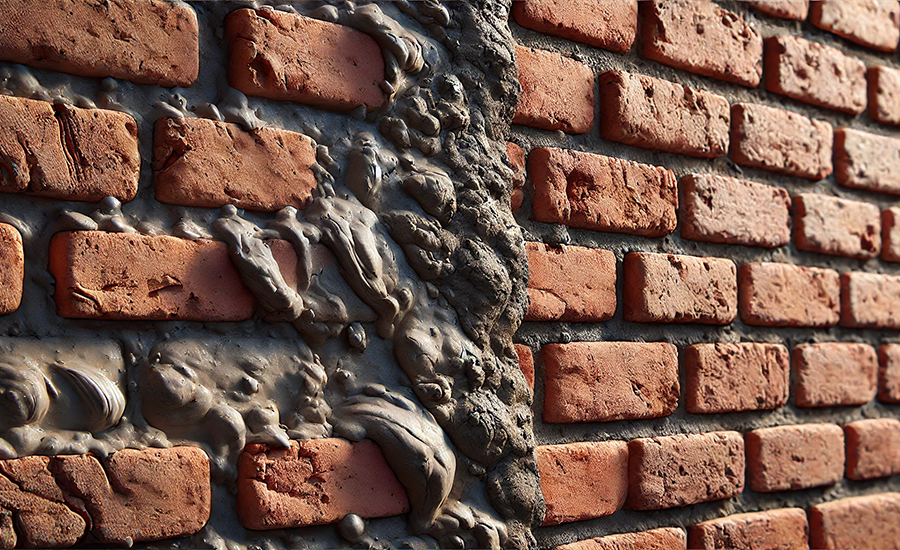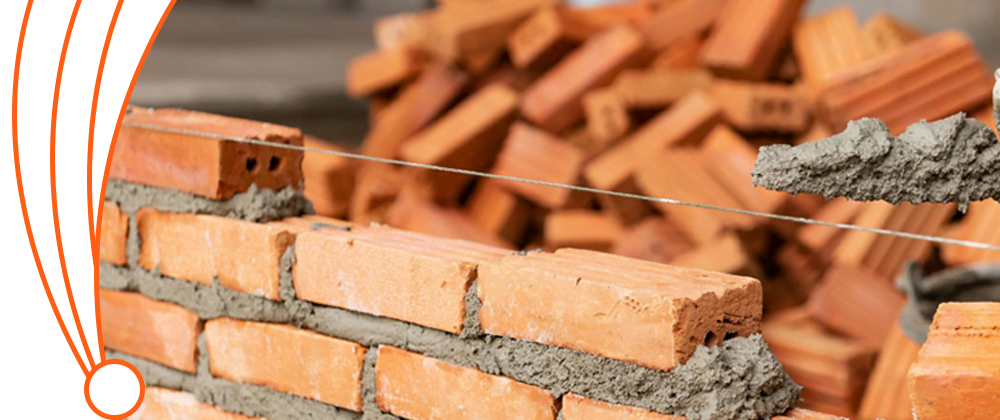Constructing durable, solid, and aesthetically pleasing brickwork requires both mortar for retention and pointing for surface finish treatment in masonry applications. Construction mortar comprises sand, cement, and water that connect bricks, stones, or blocks because it creates structural stability in the construction elements. Brick pointing denotes a procedure that finishes and smoothes out mortar joints which emerge from the masonry units. The structure relies on mortar for stability, yet pointing optimizes durability by protecting joints from exterior conditions and physical wear. Any brick structure benefits from combining mortar and pointing, creating structural endurance and an attractive appearance.
To understand how brick pointing enhances masonry strength, check out our guide on what is brick pointing?.
What is Mortar?
Mortar is a construction material primarily used to bond building materials such as bricks, stones, and blocks. It is made by mixing a binder (such as cement or lime), sand, and water, which forms a thick paste that hardens over time to create a solid, durable bond. Mortar is the primary bonding material that connects masonry units and occupies all the space between them to enhance structural stability.
Through its application, mortar performs dual functions: evenly distributes loading stresses across the surface area and maintains structural stability to ward off movement and settling. The three basic mortar types – cement mortar, lime mortar, and mud mortar- exist to fulfil various construction needs according to strength, flexibility, and set time needs.
A building needs mortar because it delivers structural stability and extended durability against outdoor conditions.
What Is Pointing?
Masonry professionals finish and shape exposed mortar joints between bricks and stones with pointing procedures to seal their construction. The process requires filling followed by smooth joint structures to boost the structural appearance and durability. After the mortar has been set and hardened, excess mortar is removed, and fresh mortar is applied in a specific pattern, such as flush, recessed, or struck, depending on the desired finish.
The Purpose of brick pointing is multifaceted: it not only improves the aesthetic appeal of the masonry by giving it a clean, finished look but also enhances its durability.
The correct application of mortar helps shield buildings from water seepage which prevents damage to brickwork materials and structural weakening. Pointing application strengthens joint areas, ensuring the long-lasting health and structural quality of the building. Pointing technology enables vital brick structure preservation and restoration, primarily in structures dating from earlier times.

Pointing not only enhances aesthetics but also strengthens brickwork. Discover why it’s essential here and learn when to get it done here.
Key Differences Between Mortar and Pointing
Masonry work follows two vital stages like mortar for bonding materials and pointing for mortar joint protection.
Mortar is a bonding agent to connect bricks and stone blocks while pointing functions for surface finishing and covering up exposed mortar joints. Masonry work features two essential components, which are defined by their unique functions:
| Feature | Mortar | Pointing |
|---|---|---|
| Purpose | Bonds masonry units together, providing structural strength and stability. | Enhances the appearance and weather resistance of joints between masonry units. |
| Application | Applied between bricks, stones, or blocks to hold them in place. | Applied to the exposed mortar joints after the wall is built. |
| Composition | A mixture of cement, sand, lime, and water. | Primarily composed of fresh mortar that is shaped and finished to smooth joints. |
| Visibility | Not visible once applied, as it is hidden between the masonry units. | Visible on the surface, giving the structure a clean, finished look. |
| Functionality | Provides structural integrity and stability to the wall or structure. | Protects joints from weather damage, moisture, and erosion, enhancing appearance. |
| Durability | Provides long-lasting support for masonry, ensuring it remains intact. | Increases the structure’s life by preventing water infiltration and reducing joint damage. |
| Maintenance | Requires periodic repairs when mortar deteriorates. | Needs to be redone or maintained if the pointing begins to wear or crack. |
| Types | Cement mortar, lime mortar, mud mortar, etc. | Flush pointing, recessed pointing, beaded pointing, struck pointing, etc. |
| Aesthetic Role | Mainly functional with no emphasis on aesthetics. | Contributes to the overall appearance of the masonry, offering a neat and uniform finish. |
Different pointing techniques impact both durability and aesthetics. Methods like Flush Pointing, Weathered Pointing, and Struck Pointing play a crucial role in maintaining masonry structures. For a complete guide on masonry maintenance, explore our detailed insights here.
Wherever you are, Sardar Restoration Corp’s services are tailored to meet local needs. Contact us today at (+1) 917-355-8556 or sardarrestoration@gmail.com, or visit us at 2770 Fish Ave, Bronx, NY 10469, United States. Let us bring excellence to your next project!
FAQs
Can mortar be used without pointing?
Yes, mortar bonds bricks and stones, but without pointing, exposed joints remain vulnerable to moisture and weather damage, leading to structural issues over time. Learn more about brick pointing and its role in masonry.
How does pointing improve brickwork durability?
Pointing seals and reinforces mortar joints, preventing water infiltration, reducing erosion, and enhancing structural integrity. Different techniques, like flush pointing, weathered pointing, and struck pointing, offer various durability benefits.
Is pointing necessary for all masonry structures?
Yes, especially for exterior brickwork. Proper pointing extends the lifespan of masonry by reducing water damage and protecting against wear and tear. If you’re unsure, find out how often brick should be repointed.
What happens if mortar deteriorates but pointing remains intact?
Even if pointing looks fine, deteriorated mortar can weaken the entire structure. Repointing brick may be necessary to restore strength and prevent further damage. Learn about potential repointing costs.






